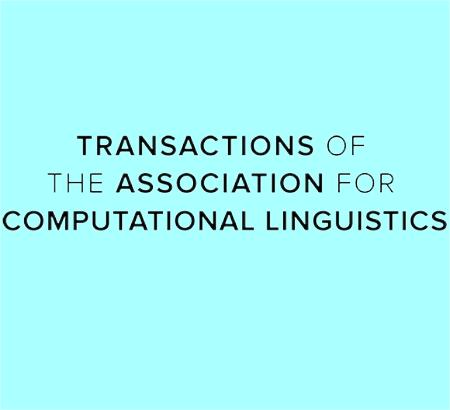Why Does Surprisal From Larger Transformer-Based Language Models Provide a Poorer Fit to Human Reading Times?
IF 4.2
1区 计算机科学
Q2 COMPUTER SCIENCE, ARTIFICIAL INTELLIGENCE
Transactions of the Association for Computational Linguistics
Pub Date : 2022-12-23
DOI:10.1162/tacl_a_00548
引用次数: 30
Abstract
This work presents a linguistic analysis into why larger Transformer-based pre-trained language models with more parameters and lower perplexity nonetheless yield surprisal estimates that are less predictive of human reading times. First, regression analyses show a strictly monotonic, positive log-linear relationship between perplexity and fit to reading times for the more recently released five GPT-Neo variants and eight OPT variants on two separate datasets, replicating earlier results limited to just GPT-2 (Oh et al., 2022). Subsequently, analysis of residual errors reveals a systematic deviation of the larger variants, such as underpredicting reading times of named entities and making compensatory overpredictions for reading times of function words such as modals and conjunctions. These results suggest that the propensity of larger Transformer-based models to ‘memorize’ sequences during training makes their surprisal estimates diverge from humanlike expectations, which warrants caution in using pre-trained language models to study human language processing.为什么更大的基于变压器的语言模型提供的惊喜更不适合人类的阅读时间?
这项工作从语言学角度分析了为什么更大的基于Transformer的预训练语言模型具有更多的参数和更低的困惑,却产生了对人类阅读时间预测性较差的奇怪估计。首先,回归分析显示,在两个独立的数据集上,最近发布的五个GPT-Neo变体和八个OPT变体的困惑和适合阅读时间之间存在严格的单调、正对数线性关系,复制了仅限于GPT-2的早期结果(Oh et al.,2022)。随后,对残差的分析揭示了较大变体的系统偏差,例如低估命名实体的阅读时间,以及对语气词和连词等虚词的阅读时间进行补偿性高估。这些结果表明,较大的基于Transformer的模型在训练过程中倾向于“记忆”序列,这使得它们的奇怪估计偏离了类人期望,这在使用预先训练的语言模型研究人类语言处理时值得谨慎。
本文章由计算机程序翻译,如有差异,请以英文原文为准。
求助全文
约1分钟内获得全文
求助全文
来源期刊
CiteScore
32.60
自引率
4.60%
发文量
58
审稿时长
8 weeks
期刊介绍:
The highly regarded quarterly journal Computational Linguistics has a companion journal called Transactions of the Association for Computational Linguistics. This open access journal publishes articles in all areas of natural language processing and is an important resource for academic and industry computational linguists, natural language processing experts, artificial intelligence and machine learning investigators, cognitive scientists, speech specialists, as well as linguists and philosophers. The journal disseminates work of vital relevance to these professionals on an annual basis.

 求助内容:
求助内容: 应助结果提醒方式:
应助结果提醒方式:


